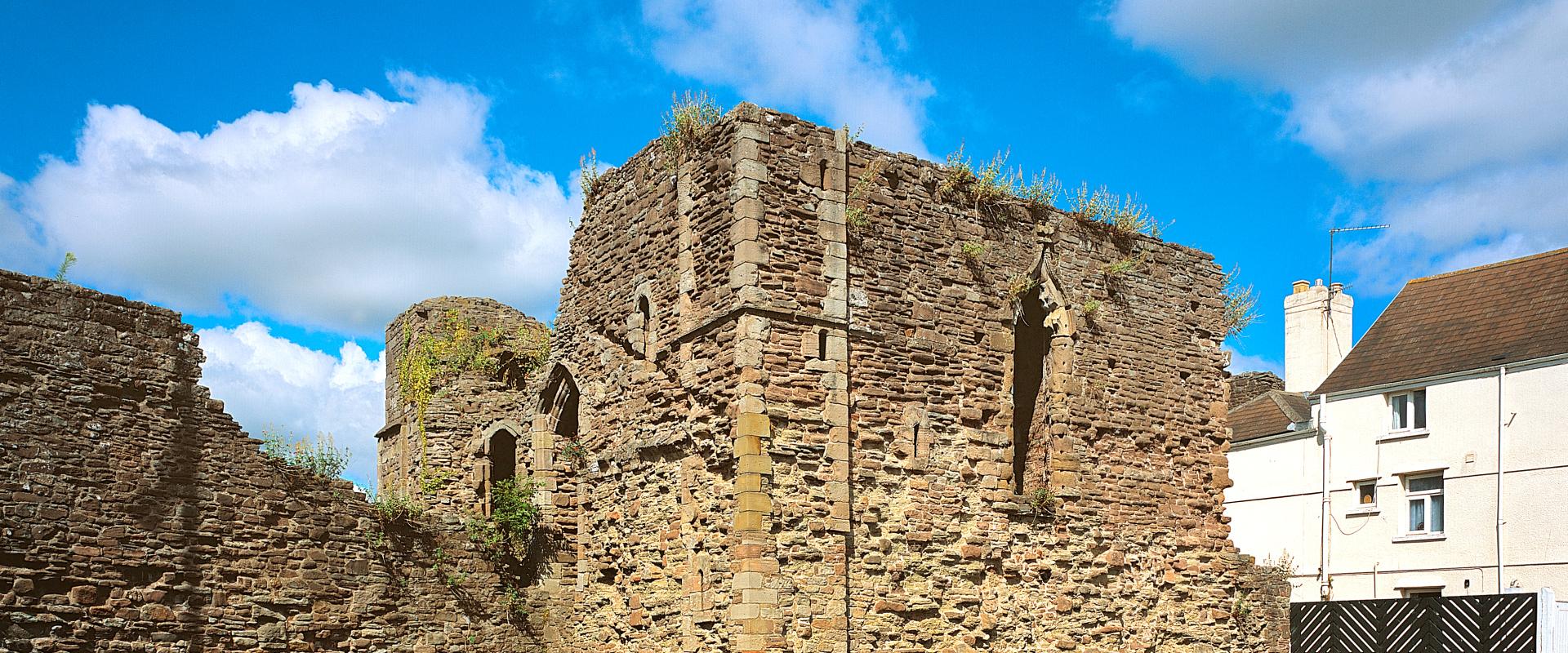Monmouth Castle

Ruined castle with a regal history
It’s a surprise to find this ruin, tucked away as it is in a lane off Monmouth’s main shopping street. Strategically located at crossings of the River Wye and River Monnow, only a few fragments – ruins of the 12th-century Great Tower and 13th-century hall – remain of this once-important castle.
It was founded in the 11th century by Norman lord William fitz Osbern, and by the mid-14th century was in the hands of Henry of Grosmont, who modified the tower with large decorated windows whose outline can still be seen in the east wall.
The most notable event in the tower’s history occurred on 16 September 1386, when King Henry V of Battle of Agincourt fame was born here, an occasion commemorated at Monmouth’s Agincourt Square.
Opening times & prices
Opening times
| 1st April - 31st March | Open all year |
|---|---|
|
Open all year — during reasonable daylight hours |
|
Visitor information
Dogs welcome
Walking difficulty
Terrain: Level 1 – Accessible
Drone policy
No smoking
Health & Safety
Care and attention must be paid when visiting this monument. It will be regularly exposed to the natural elements and may be slippery or muddy underfoot.
Appropriate footwear for the season and type of monument must be considered prior to your visit. Please only attend during the set opening hours, these have been chosen for your safety i.e. appropriate level of lighting.
Many of our monuments are located at areas of height, attention must also be paid therefore to the surrounding areas, ditches and moats when visiting.
Guardrails have been installed to prevent access to any areas of the site that we have deemed as dangerous or to prevent falls in specific areas. Please do not climb over or through any fixed installation.
Any handrail provided should be used to help you safely navigate historic steps, as these may be uneven and may be of different height.
As with all ancient monuments there is always a risk of stones being dislodged in bad weather, however, we manage this through extensive monitoring.
Climbing may result in serious injury.
There are several wild plants and flowers, although these are great pollinators, they may be poisonous to visitors and animals, we strongly advise you not to touch or allow dogs to eat any vegetation.
Please watch our health & safety film before visiting Cadw sites.
Iechyd a Diogelwch / Health and Safety
Please report any anti-social behaviour such as climbing, setting fires, graffiti etc. to CadwAccidentsReports@gov.wales
The following signs can be found around the site at key areas of risk, please pay attention where appropriate.
Slippery or uneven surfaces
Falls from height
Falling masonry
Directions
Google Mapwhat3words: ///crumb.explores.bunk
Park in Monmouth town centre (pay & display). Nearest car park is in Glendower Street.
Unlimited access to Wales' past
Join Cadw for as little as £2.00 a month and gain unlimited access to over 100 historical sites.
Enjoy the many benefits of Cadw membership
- 10% off Cadw gift shops
- 50% off entry to English Heritage and Historic Scotland sites
- FREE entry to English Heritage and Historic Scotland on renewal
- FREE entry to Manx National Heritage properties
- FREE membership pack including car sticker and full colour map